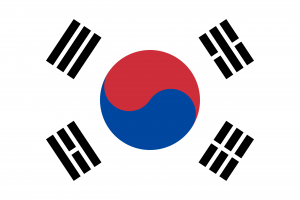Language/Korean/Grammar/Basic-Verb-Conjugation
 Հայերէն
Հայերէն Български език
Български език 官话
官话 官話
官話 Hrvatski jezik
Hrvatski jezik Český jazyk
Český jazyk Nederlands
Nederlands English
English Suomen kieli
Suomen kieli Français
Français Deutsch
Deutsch עברית
עברית हिन्दी
हिन्दी Magyar
Magyar Bahasa Indonesia
Bahasa Indonesia فارسی
فارسی Italiano
Italiano 日本語
日本語 Қазақ тілі
Қазақ тілі Lietuvių kalba
Lietuvių kalba Νέα Ελληνικά
Νέα Ελληνικά Şimali Azərbaycanlılar
Şimali Azərbaycanlılar Język polski
Język polski Português
Português Limba Română
Limba Română Русский язык
Русский язык Српски
Српски Español
Español العربية القياسية
العربية القياسية Svenska
Svenska Wikang Tagalog
Wikang Tagalog தமிழ்
தமிழ் ภาษาไทย
ภาษาไทย Türkçe
Türkçe Українська мова
Українська мова Urdu
Urdu Tiếng Việt
Tiếng Việt
| ◀️ Korean Cuisine — Previous Lesson | Next Lesson — Question Words ▶️ |
Hello and welcome to the Korean Grammar course! In this lesson, we will learn how to conjugate Korean verbs in the present tense. This is a crucial step in mastering the Korean language, as it will allow you to build sentences using basic vocabulary and grammar structure.
After mastering this lesson, these related pages might interest you: Plurals & Question Words.
Overview[edit | edit source]
Before we dive into the specifics of verb conjugation, it is important to understand the basics of the Korean language structure. Korean has a unique sentence structure, which is subject-object-verb. This means that in a sentence, the subject comes first, followed by the object, and then the verb. For example, if we want to say "I eat rice" in Korean, we would say "저는 밥을 먹어요" which translates to "I rice eat."
Korean verbs are usually made up of two parts, the verb stem, which expresses the action, and the verb ending, which indicates the tense, mood, or honorific level used in the sentence. In this lesson, we will focus on the present tense verb endings.
Present Tense[edit | edit source]
Korean present tense verbs have different endings depending on the verb stem's last consonant. The following table summarizes the present tense endings for the three types of verb endings.
| Ending type | Verb stem ending | Honorific degree | Example | English Translation |
|---|---|---|---|---|
| ㅂ니다 | end with a vowel or ㄹ (in the latter case, the ㄹ is removed) | formal high | 가다 (to go) | 갑니다 (goes) |
| 습니다 | end with any other consonant | formal high | 잡다 (to catch) | 잡습니다 (catches) |
| 아요 | end with ㅏ/ㅑ/ㅗ + (a consonant or nothing) (when being next to ㅏ, one of the ㅏs is removed) or end with a syllable with ㅏ/ㅑ/ㅗ + a syllable ending in ㅡ (the ㅡ is removed) | informal high | 보다 (to see) | 보아요/봐요 (sees) |
| 어요 | end with any other vowel + (a consonant or nothing) (when being next to ㅓ, one of the ㅓs is removed) | informal high | 얻다 (to get) | 얻어요 (gets) |
| 아 | end with ㅏ/ㅑ/ㅗ + (a consonant or nothing) (when being next to ㅏ, one of the ㅏs is removed) or end with a syllable with ㅏ/ㅑ/ㅗ + a syllable ending in ㅡ (the ㅡ is removed) | informal low | 받다 (to receive) | 받아 (receives) |
| 어 | end with any other vowel + (a consonant or nothing) (when being next to ㅓ, one of the ㅓs is removed) | informal low | 먹다 (to eat) | 먹어 (eats) |
To use these verb endings, you need to know how to write them in Hangeul, Korean's alphabet system, and how to attach them to the verb stem. Let's take a look at some examples:
- 가다 (to go) -> 갑니다/가요/가 (goes)
- 먹다 (to eat) -> 먹습니다/먹어요/먹어 (eats)
- 보다 (to see) -> 봅니다/보아요/봐요/보아/봐 (sees)
Note that the final verb ending "-요" is added to make the sentence more polite, but it can be omitted if you are talking to someone who is younger or of lower status than you.
Practice[edit | edit source]
Now that we've covered the basics, it's time to practice conjugating some Korean verbs in the present tense. Here are some verbs and their present tense forms:
- 가다 (to go) -> 갑니다 (goes)
- 보다 (to see) -> 봐요 (sees)
- 먹다 (to eat) -> 먹어요 (eats)
- 자다 (to sleep) -> 잡니다 (sleeps)
- 일하다 (to work) -> 일해요 (works)
Try to create sentences using these verbs and present tense verb endings. Here are a few examples to get you started:
- 저는 학교에 가요 (I go to school)
- 한국어를 공부해요 (I study Korean)
- 개를 봐요 (I see the dog)
- 저는 밥을 먹어요 (I eat rice)
Remember to always use the subject-object-verb structure in Korean sentences.
Sources[edit | edit source]
- Korean Verb Conjugation: A Beginner's Dream Guide to Mastery ...
- Korean Conjugation - Your Complete Guide to Verb Endings
- Korean Verb Conjugation: Everything You Need to Know as a ...
Videos[edit | edit source]
Learn How To Conjugate Korean Verbs [THE BASIC] - YouTube[edit | edit source]
How to Conjugate the Present Tense in Korean - Basic Korean ...[edit | edit source]
Other Lessons[edit | edit source]
- Connecting Verbs
- Korean Pronunciation
- Conditional Sentences
- How to Use Have
- Gender
- Comparatives and Superlatives
- Describing People
- Describing Things
- Conjunctions
- Future Tense
| ◀️ Korean Cuisine — Previous Lesson | Next Lesson — Question Words ▶️ |

